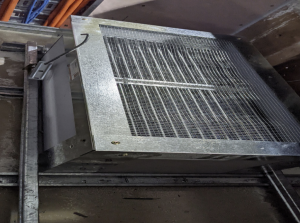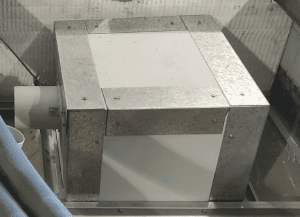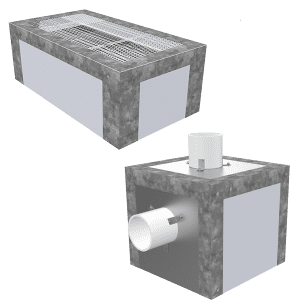Fire Dampers: Safeguarding Buildings with Compliance to Australian Standards
Fire dampers play a vital role in fire safety within buildings by preventing the spread of fire through ventilation systems. Widely utilized in the building industry, fire dampers act as barriers that automatically close in the event of a fire, restricting the movement of flames, smoke, and toxic gases. In Australia, it is crucial to ensure that fire dampers meet the necessary standards to ensure optimum fire protection. This article will provide an overview of fire dampers, their usage in the building industry, and the Australian standards they need to adhere to.

Understanding Fire Dampers
Fire dampers are mechanical devices installed in ventilation systems that respond to elevated temperatures or smoke, automatically closing to prevent the spread of fire and its byproducts. These dampers are strategically placed in ductwork, fire barriers, and partitions, acting as effective barriers that maintain the integrity of fire compartments within a building. By isolating different sections of a building, fire dampers help delay the spread of fire, allowing occupants more time to evacuate and firefighters more time to control the situation.
Importance in the Building Industry
The building industry extensively utilizes fire dampers as a crucial fire protection measure. Fire dampers are commonly found in commercial buildings, hospitals, schools, and other structures where ventilation systems are present. By preventing the spread of fire through ductwork, fire dampers assist in containing fires within designated areas and help maintain the structural integrity of a building. They are an essential part of building codes and regulations, ensuring the safety of occupants and minimizing property damage in the event of a fire.

Australian Standards for Fire Dampers
In Australia, fire dampers must adhere to the requirements set by the Building Code of Australia (BCA) and specific Australian Standards. The key standard that fire dampers need to meet is AS 1682.1:2018 – “Fire dampers, Part 1: Specification.” This standard outlines the minimum requirements for the design, construction, installation, and maintenance of fire dampers in buildings.
According to AS 1682.1:2018, fire dampers must meet the following criteria:
Fire resistance: Fire dampers should be capable of maintaining their structural integrity during fire exposure, preventing the spread of fire for a specified duration.
Activation temperature: The damper should respond to elevated temperatures as specified in the standard, closing to restrict the passage of flames, smoke, and gases.
Smoke leakage: Fire dampers must limit the leakage of smoke to a specified level, enhancing the effectiveness of smoke control measures.
Operational reliability: Fire dampers should undergo regular inspections, testing, and maintenance to ensure their proper functioning when needed.
-
FyreDAMPER
- Select options This product has multiple variants. The options may be chosen on the product page
Meeting these standards ensures that fire dampers effectively fulfill their intended purpose and comply with Australian regulations.
Conclusion
Fire dampers play a crucial role in safeguarding buildings against the rapid spread of fire through ventilation systems. Adherence to Australian standards, particularly AS 1682.1:2018, ensures that fire dampers meet the required fire resistance, activation, smoke leakage, and operational reliability criteria, providing optimal fire protection within buildings.



